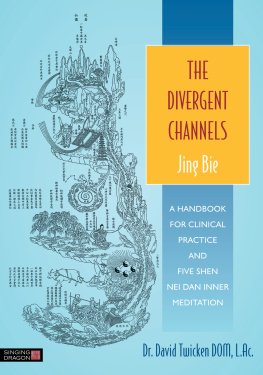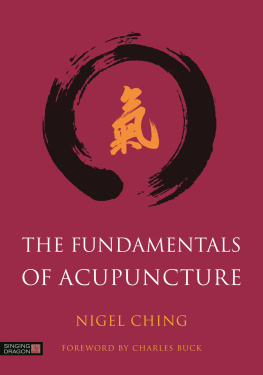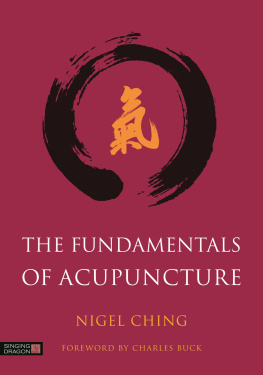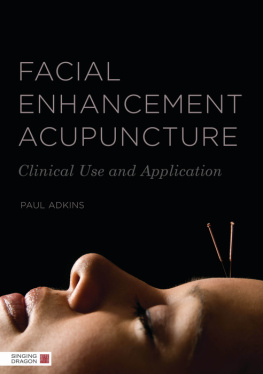Time Acupuncture Chrono-Acupuncture Zi Wu Liu Zhu Ling Gui Ba Fa Fei Teng Ba Fa One who can treat disease by selecting among the 66-points at differing times of the day has got the real medical secret. Dou Hanqing David Twicken
Time Acupuncture Zi Wu Liu Zhu - Ling Gui Ba Fa - Fei Teng Ba Fa Time Acupuncture All Rights Reserved 2005 by David Twicken Copyright Registered February, 2005, 2020 No part of this book may be reproduced or transmitted in any form or by any means, graphic, electronic, or mechanical, including photocopying, recording, taping, or by any information storage or retrieval system, without the permission in writing from the author. ISBN: 978-0-9759562-1-2
Disclaimer The information in this book is based on the authors knowledge and personal experience, it is presented for educational purposes to assist the reader in expanding his or her knowledge of Chinese metaphysics, philosophy and medicine. Seek advise from a professional and licensed healthcare practitioner regarding the methods in this text. The techniques and practices are to be used at the readers own discretion and liability.
Table of Contents
Introduction
The foundation principles of Chinese medicine are in two classic Chinese metaphysical and medical texts: the I Ching and Nei Jing .
Table of Contents
Introduction
The foundation principles of Chinese medicine are in two classic Chinese metaphysical and medical texts: the I Ching and Nei Jing .
Each of those books contain a central theme that permeates all Taoist art the influence of change. Cycles, rhythms and patterns of qi are the basis of the art and science of I Ching, Feng Shui and Chinese Astrology. Chinese medicine, one of the branches of the Taoist arts contains many applications of cycles of time. Three of the most popular time based methods of acupuncture (chrono-acupuncture) are contained in this book: Zi Wu Liu Zhu, Ling Gui Ba Fa and Fei Tang Ba Fa . This book introduces classic methods of time acupuncture in a step-by-step method, designed for practitioners with no previous knowledge of the Chinese calendar and its applications, as well as anybody with an interest in learning more about these methods. This book contains user-friendly charts, diagrams and tables allowing fast, easy reference tools.
Zi Wu Liu Zhu is the more complex of the methods in this book and it is presented in a detailed and comprehensive way in both theory and application. The principles of this method are found in the I Ching, Nei Jing, Chinese calendar and Chinese astrology. The time based acupuncture methods in this book can enhance your clinical practice. Classic methods are presented, as well as supplemental methods that have developed for centuries. The supplemental methods can be used with classic methods or as a sole treatment; all methods can be combined with traditional acupoint selection strategies. I hope you enjoy this text and find it an effective tool in your practice.
Feel free to contact me with your feedback and questions.
Chinese Dynasties
| Dynasty | Years |
| Longshan | 2500 B.C. |
| Xia | 2100-1600 B.C. |
| Shang | 1600-1045 B.C. |
| Zhou | 1045-221 B.C |
| Western Zhou | 1045-771 B.C. |
| spring and Autumn Period | 722-481 B.C. |
| Warring States Period | 403-221 B.C. |
| Qin | 221-206 B.C. |
| Han | 206 B.C.-220 A.D. |
| Western Han | 206 B.C.-24 A.D. |
| Eastern Han | 25 A.D.-220 A.D. |
| Three Kingdoms | 220-280 |
| Jin (Western and Eastern) | 265 -420 |
| Southern and Northern | 420-589 |
| Sui | 581-618 |
| Tang | 618-907 |
| Five Dynasties and Ten Kingdoms | 907-960 |
| Song | 960-1279 |
| Liao | 916-1125 |
| Jin | 1115-1234 |
| Yuan (Mongol) | 1271-1368 |
| Ming | 1368-1644 |
| Qing (Manchu) | 1644-1911 |
| Republic of China | 1912-1949 |
| Peoples Republic of China | 1949-present |
Stem-Branch Energy Cycles
Yin-Yang & Five Phases Cycles Taoists view the universe as one integrated whole.
| Three Kingdoms | 220-280 |
| Jin (Western and Eastern) | 265 -420 |
| Southern and Northern | 420-589 |
| Sui | 581-618 |
| Tang | 618-907 |
| Five Dynasties and Ten Kingdoms | 907-960 |
| Song | 960-1279 |
| Liao | 916-1125 |
| Jin | 1115-1234 |
| Yuan (Mongol) | 1271-1368 |
| Ming | 1368-1644 |
| Qing (Manchu) | 1644-1911 |
| Republic of China | 1912-1949 |
| Peoples Republic of China | 1949-present |
Stem-Branch Energy Cycles
Yin-Yang & Five Phases Cycles Taoists view the universe as one integrated whole.
Universal energetic patterns can be categorized with the the yin-yang and five phases models, both are used in the Zi Wu Liu Zhu system of acupuncture. The Chinese devised a method of calculating the influence of Time using the yin-yang and five phases (five elements) models; the method includes the heavenly stems and earthly branches. Cycles of time correspond to the five elements: water, wood, fire, earth and metal and each element contains a yin and yang aspect, for example, the 10-heavenly stems are yang wood, yin wood, yang fire, yin fire, yang earth, yin earth, yang metal, yin metal, yang water, yin water; the stems are the five elements with a yin and yang polarity. The 12-earthly branches include the five elements with their yin-yang quality, totaling 10-branches, they also have an additional earth branch that contains a yin and yang aspect producing 12-branches. Earth is a transformer; it transforms one element into another and that is why there are two extra earth elements, one yin and one yang. The 12-branches are yang wood, yin wood, yang earth; yang fire, yin fire, yin earth ; yang metal, yin metal, yang earth; yin water, yang water, and yin earth .
Branches can also be referred to by their Chinese zodiac animal name, see the following 12-branch table. Branches reflect the earthly energies which include the 12-months of the year and the daily pattern of 12-double hour cycles.
Ten Heavenly Stems Tian Yuan
| Element | Stem |
| yang wood | Jia |
| yin wood | Yi |
| yang fire | Bing |
| yin fire | Ding |
| yang earth | Wu |
| yin earth | Ji |
| yang metal | Geng |
| yin metal | Xin |
| yang water | Ren |
| yin water | Gui |
The flow or pattern of the 10-stems is the five phases generating (sheng) cycle and begins with wood: wood, fire, earth, metal and then water. Each element contains a yin and yang qi; the pattern of elements flow from yang to yin into perpetuity; all years, months, days and hours contain the 10-stems.
| Stem | Stem | Stem | Stem | Stem | Stem | Stem | Stem | Stem | Stem |
| yang wood | yin wood | yang fire | yin fire | yang earth | yin earth |
Next page




![John Urbanski D.C. - Acupuncture Meridian Point Locations Atlas [fixed Toc and Links]](/uploads/posts/book/281557/thumbs/john-urbanski-d-c-acupuncture-meridian-point.jpg)



